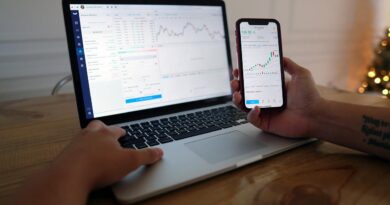The 10 Least Valuable Currencies of 2023: A Detailed Exploration
While many people are well-informed about the strongest and most stable currencies worldwide, such as the British Pound Sterling, Swiss Franc, US Dollar, and Euro, the least valuable currencies often go unnoticed. This article aims to shed light on the currently weakest currencies in 2023, offering insight into the countries where they are issued and the reasons behind their devaluation.
Content
The World’s 10 Least Valuable Currencies in 2023
The exchange rates of these devalued currencies were updated on April 21, 2023. Here is an overview of the ten weakest currencies compared to the US Dollar:
- Iranian Rial (IRR) – Approximately 514,000 IRR/USD
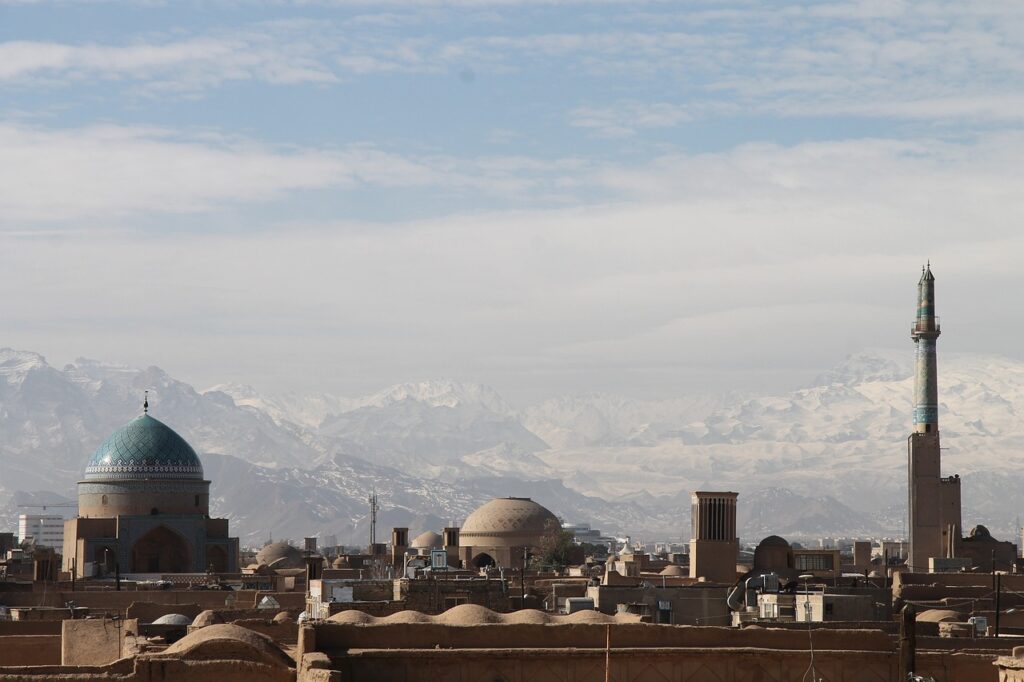
In the world of foreign exchange (forex) trading, where most discussions revolve around strong, stable currencies, the Iranian Rial stands out as a fascinating case study. Holding the dubious distinction of being the world’s cheapest currency, the Rial’s journey of devaluation offers insights into global economics, political factors, and the unique opportunities it presents to forex traders.
The Roots of Devaluation: Revolution, War, and Sanctions
To fully appreciate the Rial’s current position, we must first understand the events that led to its devaluation. The story begins in 1979 when the Islamic Revolution transformed Iran’s political landscape. With the new regime came uncertainty, leading to an exodus of businesses and a weakened economy. The subsequent Iran-Iraq War further exacerbated Iran’s economic woes.
The situation was further complicated by economic sanctions imposed on Iran due to its nuclear program. These sanctions limited Iran’s access to global commodity markets, severely impacted its oil exports, and restricted the nation’s access to foreign currency. Consequently, the Iranian Rial began its downward spiral.
Currency Controls and the Emergence of the Black Market
In an attempt to stabilize the Rial, the Iranian government imposed strict controls on access to foreign currency for its citizens. However, this move led to the rise of a thriving black market for currency exchange, further damaging the economy. It is estimated that the Rial’s value plunged by almost 400% due to these factors, showcasing the unintended consequences of currency controls.
A Brief Respite and Renewed Challenges
Following the signing of the nuclear agreement in 2015, Iran experienced a brief respite from economic sanctions. The Rial showed signs of recovery, and it seemed that the nation was on the path to economic stability. However, this improvement was short-lived. In 2018, the US accused Iran of continuing its nuclear program, leading to the reimposition of sanctions and a reversal of the Rial’s gains.
Forex Trading Opportunities Amid Currency Devaluation
For forex traders, the Iranian Rial’s story presents unique opportunities. Despite being the cheapest currency, it offers a window into understanding the complexities of international finance and the impact of political decisions on currency value. Traders can capitalize on the Rial’s volatility by closely monitoring Iran’s economic and political developments, which can have a direct influence on the currency’s exchange rate.
In addition, understanding Iran’s overall economic situation can provide valuable context for trading decisions. Iran is a country rich in natural resources, particularly oil, and its potential for growth is significant. However, the nation faces numerous challenges, including ongoing tensions with the US and its regional neighbors, which can affect its currency’s value. By staying informed about Iran’s economic and political landscape, forex traders can better navigate the risks and rewards associated with trading the Rial.
In Conclusion
The Iranian Rial’s journey from a once-strong currency to the world’s cheapest is a cautionary tale of how political instability, economic sanctions, and currency controls can impact a nation’s economy. For forex traders, this story offers a wealth of insights into the relationship between global events and currency value, highlighting the importance of staying informed about the countries behind the currencies they trade. As the Iranian Rial’s story continues to unfold, it serves as a reminder that even the most devalued currencies can present unique opportunities for those willing to explore them.
- Vietnamese Dong (VND) – 23,387 VND/USD

In the realm of foreign exchange (forex) trading, the Vietnamese Dong emerges as an interesting currency to watch. As Vietnam continues its transition from a centralized to a market economy, the Dong, ranked as the world’s second-cheapest currency, offers unique opportunities for forex traders. With a rapidly developing economy, Vietnam is poised to make significant strides in the coming years, making it an attractive prospect for those seeking to capitalize on the nation’s growth.
Navigating a Transition: From Centralization to a Market Economy
Over the past few decades, Vietnam has been undergoing a process of economic liberalization, gradually shifting from a centralized, state-controlled economy to a more market-oriented one. This change has resulted in remarkable growth, with Vietnam consistently being one of the fastest-growing economies in the world.
Despite this progress, the Vietnamese Dong remains significantly devalued, largely due to the nation’s economic history and challenges associated with its transition. However, this presents an exciting opportunity for forex traders, as the Dong’s value is expected to increase as Vietnam continues to integrate itself into the global economy.
A Rising Star in Asia: Vietnam’s Economic Growth and Potential
Vietnam’s rapid economic development has caught the attention of investors worldwide, as the nation has increasingly become a manufacturing hub and a significant player in international trade. The country has made significant strides in recent years, improving its infrastructure, attracting foreign investment, and expanding its export markets.
As a result, experts believe Vietnam is on the right path to catch up with its more developed Asian neighbors, such as South Korea and Taiwan. This potential for growth, combined with the Vietnamese Dong’s current low value, makes it an appealing prospect for forex traders seeking to capitalize on the nation’s future economic success.
Forex Trading Opportunities: Navigating the Vietnamese Dong
Trading the Vietnamese Dong presents a unique set of challenges and rewards for forex traders. As the currency remains devalued, there is potential for significant gains as Vietnam continues to grow and strengthen its economy. However, trading the Dong also requires a deep understanding of the country’s economic and political landscape.
To successfully trade the Vietnamese Dong, forex traders should pay close attention to several factors, including the nation’s economic policies, its relationship with major trading partners, and any potential risks or challenges that could impact its growth. By staying informed about these developments, traders can better navigate the complexities of the Vietnamese Dong and capitalize on its potential for appreciation.
In Conclusion
The Vietnamese Dong offers a fascinating case study for forex traders, as it highlights the opportunities presented by a rapidly evolving economy. Despite its current low value, the Dong is poised to increase in value as Vietnam continues its transition to a market economy and solidifies its position on the global stage.
For forex traders seeking to capitalize on the Dong’s potential, it is essential to remain informed about the country’s economic and political developments. By closely monitoring these factors, traders can seize the opportunities presented by the Vietnamese Dong, turning the nation’s economic growth into profitable forex trading strategies.
- Sierra Leonean Leone (SLL) – 22,418 SLL/USD

The Sierra Leonean Leone stands out as a compelling case in the world of foreign exchange (forex) trading, shaped by the African country’s tumultuous history and economic struggles. Sierra Leone, plagued by poverty, war, and disease, has seen its currency devalued as it grapples with these numerous challenges. As the nation strives for a brighter future, the Leone’s journey offers unique insights into forex trading opportunities and the resilience of a country on the path to recovery.
A Nation Beset by Challenges: Sierra Leone’s Struggles and the Leone’s Devaluation
Located in West Africa, Sierra Leone has been battered by a series of devastating events that have deeply impacted its economy and currency. The nation’s recent civil war, which lasted from 1991 to 2002, decimated the country’s infrastructure, leaving the economy in ruins. The scars of this brutal conflict are still evident today, with lingering effects on the nation’s growth and stability.
Adding to Sierra Leone’s woes, the country has faced multiple outbreaks of the deadly Ebola virus, which further strained its fragile economy and healthcare system. These challenges have contributed to the devaluation of the Sierra Leonean Leone, making it one of the weakest currencies in the world.
Redenomination: The Birth of the New Leone
In August 2021, the Bank of Sierra Leone took a bold step to address the currency’s devaluation by redenominating the Leone. This process involved replacing old banknotes with new ones, called the New Leone, at a rate of 1 New Leone to 1,000 old Leones. The redenomination aimed to simplify transactions, combat inflation, and instill confidence in the nation’s currency.
Forex Trading Opportunities: Navigating the Sierra Leonean Leone
Trading the Sierra Leonean Leone presents forex traders with a unique set of risks and rewards. As the nation battles its economic and political challenges, there is potential for currency appreciation if Sierra Leone can successfully navigate its path to recovery. However, trading the Leone also requires a deep understanding of the country’s complex landscape and the factors influencing its currency’s value.
To effectively trade the Sierra Leonean Leone, forex traders should stay informed about the nation’s economic policies, political stability, and potential risks that could impact its currency. By closely monitoring these developments, traders can better understand the Leone’s trajectory and take advantage of potential opportunities in the forex market.
In Conclusion
The Sierra Leonean Leone offers a fascinating study in the world of forex trading, revealing the impact of a nation’s hardships on its currency. As Sierra Leone works to overcome its struggles and build a brighter future, the Leone’s journey provides valuable insights into the dynamics of currency devaluation and the potential for appreciation.
For forex traders interested in the Leone, staying informed about Sierra Leone’s economic and political developments is crucial. By understanding the factors shaping the currency’s value, traders can navigate the complexities of the Leone and seize potential opportunities in the forex market. The Leone’s story serves as a testament to a nation’s resilience and its ongoing quest for economic recovery.
- Lao or Laotian Kip (LAK) – 17,274 LAK/USD

The Lao or Laotian Kip sets itself apart from other weak currencies with its unconventional journey, defying the usual narrative of devaluation. The Kip, initially issued at a low exchange rate, has gradually strengthened against the US Dollar since its introduction in 1952. This currency’s intriguing story offers forex traders valuable insights into the factors that influence a currency’s value and the opportunities available in the forex market.
A Currency Uncommonly Born: The Laotian Kip’s Inception
When the Laotian Kip was first introduced in 1952, it was launched with a remarkably low exchange rate. This unusual approach was a deliberate decision by the Lao government, aimed at fostering economic growth and stability. As a result, the Kip has not suffered the same devaluation that plagues many other weak currencies.
Instead, the Laotian Kip has steadily strengthened against the US Dollar over the years, showcasing its resilience and the nation’s commitment to economic progress. This unique trajectory provides forex traders with a valuable case study of a currency that has managed to defy conventional wisdom and forge its own path.
Forex Trading Potential: The Laotian Kip’s Growing Appeal
The Laotian Kip’s journey has sparked interest among forex traders, offering potential opportunities for those who can navigate the currency’s complexities. As the Kip continues to strengthen and appreciate against the US Dollar, traders can capitalize on its growth by staying informed about the economic and political developments in Laos.
Key factors that influence the Kip’s value include the Lao government’s economic policies, regional trade relationships, and the overall health of the nation’s economy. By keeping a close eye on these factors, forex traders can better understand the Laotian Kip’s trajectory and seize potential opportunities in the forex market.
Country Overview: The Land of a Thousand Elephants
Laos, officially known as the Lao People’s Democratic Republic, is a landlocked Southeast Asian country bordered by China, Vietnam, Cambodia, Thailand, and Myanmar. Despite being one of the region’s smallest economies, Laos has experienced steady economic growth in recent years, primarily driven by its abundant natural resources and growing tourism industry.
The Lao government has focused on developing its infrastructure, attracting foreign investment, and fostering regional trade relationships. These efforts have played a vital role in strengthening the Laotian Kip, which has managed to appreciate against the US Dollar even as it maintains its status as one of the weakest currencies in the world.
In Conclusion
The Laotian Kip’s unique journey offers a fascinating perspective on the world of forex trading, illustrating how a currency can overcome its initially low exchange rate and forge a path of steady appreciation. This currency’s story provides invaluable insights into the factors that influence a currency’s value and the potential opportunities that await informed forex traders.
By closely monitoring the Laotian Kip’s trajectory and staying informed about Laos’s economic and political developments, forex traders can capitalize on the currency’s growth and navigate the complexities of this intriguing market. The Laotian Kip’s story serves as a testament to a nation’s resilience and its unwavering commitment to economic progress.
- Indonesian Rupiah (IDR) – 14,946 IDR/USD

Despite being an economically stable and relatively developed country in Southeast Asia, Indonesia’s national currency, the Rupiah, maintains a low exchange rate. The Indonesian government has taken steps to strengthen the currency, but these efforts have only resulted in minor changes. This unique situation presents an engaging look at the forex market and offers a glimpse into the economic climate of this thriving nation.
A Stable Currency in a Vibrant Economy
Indonesia, the largest economy in Southeast Asia, is known for its abundant natural resources, robust manufacturing sector, and growing tourism industry. With a strong domestic market and a stable political environment, Indonesia’s economy has consistently experienced growth in recent years. However, the Indonesian Rupiah remains one of the weakest currencies in the world, trading at a low exchange rate against the US Dollar.
This apparent contradiction between economic stability and a weak currency creates a fascinating dynamic for forex traders. As the Indonesian government attempts to boost the Rupiah’s value, traders have the opportunity to capitalize on the currency’s fluctuations and benefit from the nation’s economic growth.
The Government’s Efforts to Strengthen the Rupiah
In an attempt to bolster the Rupiah’s value, the Indonesian government has implemented various measures, including introducing new banknotes and controlling inflation. While these efforts have led to some minor improvements, the Rupiah’s value remains relatively low compared to other regional currencies.
Forex traders should monitor the Indonesian government’s future initiatives to strengthen the Rupiah, as these measures could create opportunities for profit. Additionally, traders can benefit from understanding the underlying factors contributing to the currency’s low value, such as the nation’s reliance on imports and the need to maintain export competitiveness.
Indonesia’s Economic Landscape: A Treasure Trove for Forex Traders
Indonesia, the world’s fourth most populous country, offers a diverse economic landscape, providing a wealth of opportunities for forex traders. The nation’s main industries include agriculture, mining, manufacturing, and tourism, all of which contribute to the country’s steady economic growth.
By staying informed about developments in these sectors, forex traders can better predict the Rupiah’s performance and seize potential opportunities. For instance, traders may want to watch for fluctuations in commodity prices or changes in global demand for Indonesian exports, as these factors could influence the Rupiah’s value.
The Indonesian Rupiah in the Forex Market
The Rupiah’s low exchange rate, coupled with Indonesia’s economic stability, creates an engaging environment for forex traders. By monitoring the Indonesian government’s efforts to strengthen the currency and staying informed about the nation’s economic developments, traders can navigate the complexities of the forex market and potentially profit from the Rupiah’s fluctuations.
In Conclusion
The Indonesian Rupiah offers a unique case study for forex traders, illustrating the delicate balance between a nation’s economic growth and its currency’s value. As Indonesia continues to develop and the government strives to boost the Rupiah’s strength, forex traders have a wealth of opportunities to explore in this dynamic market. By closely monitoring the country’s economic landscape and understanding the factors that influence the Rupiah’s value, traders can navigate the intricacies of this fascinating currency and potentially capitalize on its growth.
- Uzbek Sum (UZS) – 11,403 UZS/USD
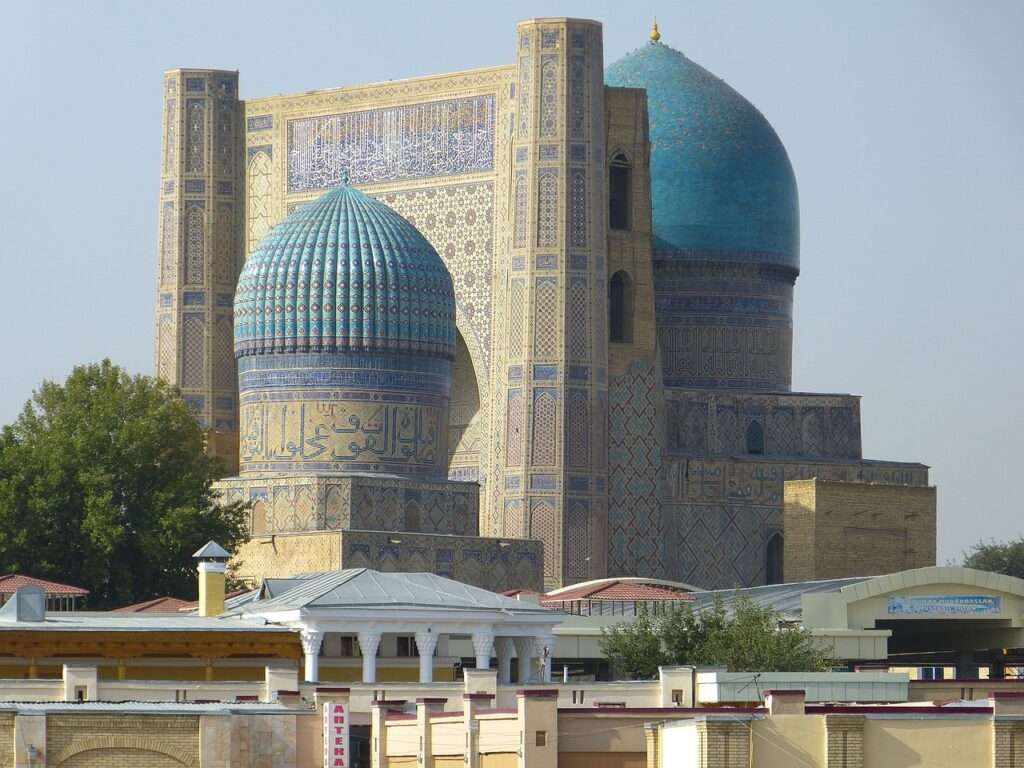
The Uzbek Sum, Uzbekistan’s national currency, has an intriguing history and offers forex traders a unique opportunity to explore a dynamic market. With the modern Sum introduced in 1994 and significant monetary policy changes in 2017, the currency has undergone a considerable transformation, presenting various opportunities for forex trading.
A Glimpse into Uzbekistan’s Economic Journey
Uzbekistan, a landlocked country in Central Asia, is known for its rich history, cultural heritage, and abundant natural resources. Since gaining independence from the Soviet Union in 1991, the country has embarked on a path of economic transformation. The modern Sum was introduced in 1994, replacing the Soviet ruble at a rate of 1 Sum equal to 1,000 Sum-coupons.
Over the years, Uzbekistan has faced numerous economic challenges, including high inflation, currency devaluation, and a heavy reliance on exports of commodities such as cotton and natural gas. However, the country has made significant strides in recent years, with reforms aimed at liberalizing its economy and monetary policy.
The Turning Point: Monetary Policy Reforms
In 2017, Uzbekistan’s government embarked on a series of monetary policy reforms, marking a turning point for the country’s economy and its currency. These reforms included the liberalization of the foreign exchange market, the introduction of a floating exchange rate regime, and the elimination of multiple currency practices.
As a result, the Uzbek Sum’s exchange rate was set at 1 USD = 8,100 UZS, with an estimated trading range of 8,000-8,150 UZS for 1 US dollar. This marked a significant devaluation of the Sum, providing forex traders with new opportunities to explore the currency’s fluctuations and capitalize on the country’s ongoing economic transformation.
Forex Trading Opportunities in the Uzbek Sum Market
The liberalization of Uzbekistan’s monetary policy has opened up a dynamic forex market for traders interested in the Uzbek Sum. As the country continues to implement economic reforms, the currency’s value is likely to experience fluctuations, offering potential profit opportunities for traders.
To capitalize on these opportunities, forex traders should stay informed about developments in Uzbekistan’s economy, including changes in its export markets, investment climate, and economic growth. Additionally, monitoring the country’s political landscape and central bank‘s policies can provide valuable insights into the Sum’s future performance.
Uzbekistan: A Country of Riches and Potential
As Uzbekistan continues its economic transformation, the country’s abundant natural resources and strategic location provide promising prospects for growth. With significant reserves of natural gas, gold, and other minerals, Uzbekistan has the potential to become a regional economic powerhouse.
Forex traders looking to explore the Uzbek Sum market can benefit from understanding the country’s economic potential and the factors driving its growth. By doing so, they can better anticipate currency fluctuations and seize potential opportunities in this emerging market.
Conclusion
The Uzbek Sum’s unique history and recent monetary policy reforms create a fascinating and dynamic forex market for traders to explore. As Uzbekistan continues its economic transformation, the currency is likely to experience fluctuations, offering potential profit opportunities for those willing to navigate this emerging market.
By staying informed about the country’s economic developments, political landscape, and central bank policies, forex traders can capitalize on the opportunities presented by the Uzbek Sum market. With its rich natural resources and ongoing reforms, Uzbekistan’s future holds promise for both its economy and the forex traders who choose to delve into this intriguing market.
- Guinean Franc (GNF) – 8,609 GNF/USD

The Guinean Franc, the national currency of Guinea, presents a fascinating case for forex traders seeking to explore unique and challenging markets. Despite the country’s abundant natural resources, Guinea’s currency remains among the most inflated globally. High inflation rates, widespread poverty, and the prevalence of criminal activities have all contributed to the devaluation of the Guinean Franc, offering opportunities for forex traders to navigate the complex landscape.
Guinea: A Land of Contrasts
Located in West Africa, Guinea is a country of contrasts. On the one hand, it is blessed with abundant natural resources, including gold, diamonds, and the world’s largest reserves of bauxite, the primary ore used to produce aluminum. This mineral wealth has the potential to transform Guinea into an economic powerhouse. On the other hand, the country faces significant challenges that have prevented it from realizing its full potential, including weak governance, corruption, and a lack of infrastructure.
The Impact of Inflation on the Guinean Franc
One of the key factors contributing to the devaluation of the Guinean Franc is the country’s high inflation rate. Guinea has struggled with inflation for years, with prices rising rapidly and the purchasing power of the currency eroding over time. This has resulted in the Guinean Franc becoming one of the most inflated currencies globally, impacting the daily lives of its citizens and creating a volatile forex market.
Forex traders seeking to capitalize on the fluctuations of the Guinean Franc must be aware of the factors driving inflation in Guinea. This includes monitoring fiscal and monetary policies, as well as understanding the impact of external factors such as commodity prices and global economic trends.
Poverty and Criminal Activities: A Vicious Cycle
Widespread poverty is another significant challenge for Guinea, with over half of the population living below the poverty line. Poverty has not only contributed to the devaluation of the Guinean Franc but has also fueled the growth of a thriving criminal underworld. Illegal activities, such as smuggling and the illicit mining of gold and diamonds, have further destabilized the country’s economy and eroded the value of its currency.
For forex traders, understanding the relationship between poverty, criminal activities, and the Guinean Franc’s performance is essential. By staying informed about developments in Guinea’s social and political landscape, traders can better anticipate the currency’s fluctuations and make informed decisions in this complex market.
Opportunities for Forex Traders in the Guinean Franc Market
Despite the challenges faced by Guinea and its currency, there are opportunities for forex traders to navigate the Guinean Franc market. By understanding the factors contributing to the currency’s devaluation and monitoring the country’s economic and political developments, traders can identify potential entry and exit points and capitalize on the currency’s fluctuations.
As Guinea continues its efforts to address its challenges and unlock its economic potential, the Guinean Franc market may offer forex traders a unique opportunity to explore a market shaped by abundant natural resources and complex economic challenges.
In conclusion, the Guinean Franc presents a fascinating case for forex traders seeking to explore a challenging market. By understanding the country’s abundant natural resources, high inflation rates, widespread poverty, and criminal activities’ impact on the currency’s value, traders can navigate the complex landscape of the Guinean Franc market and capitalize on its fluctuations. As Guinea works to address its challenges and harness its potential, forex traders who choose to delve into this market will find an intriguing and dynamic landscape to explore.
8. Paraguayan Guarani (PYG) – 7,128 PYG
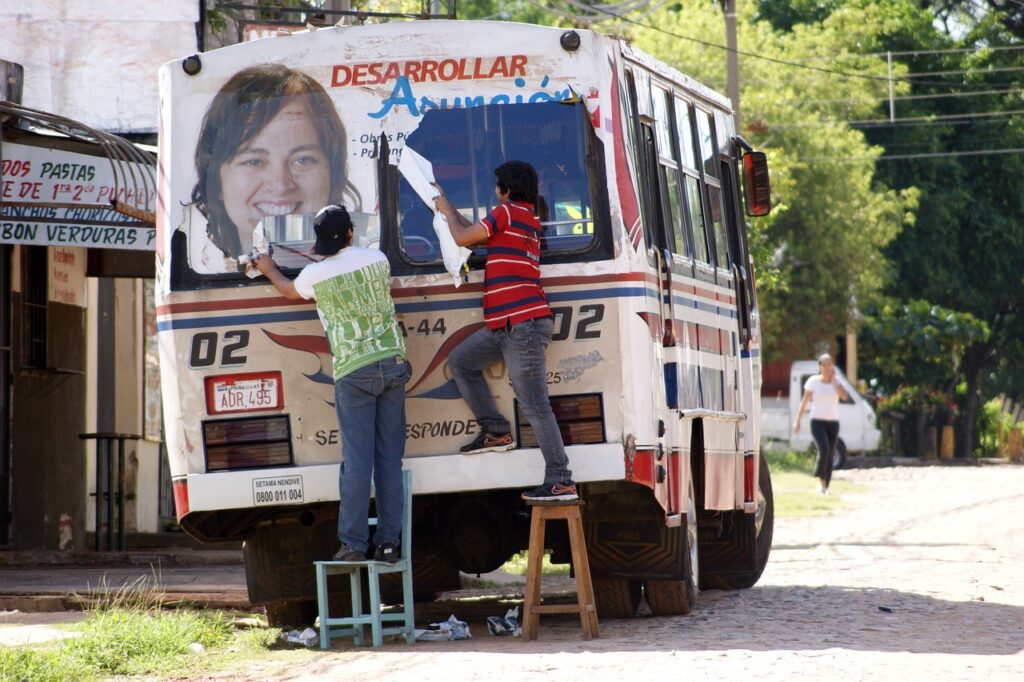
Often overlooked in the world of forex trading, Paraguay’s national currency, the Paraguayan Guarani, offers a unique opportunity for traders interested in understanding the dynamics of an emerging market. As the second-poorest South American country, Paraguay faces numerous economic challenges, including weak infrastructure, corruption, and limited access to education. These factors have contributed to the devaluation of the Paraguayan Guarani, shaping a complex and intriguing forex market landscape.
Paraguay: A Land of Untapped Potential
Nestled in the heart of South America, Paraguay is a landlocked country that has struggled to overcome its economic challenges. Despite its fertile soil and abundant natural resources, the country has lagged behind its neighbors in terms of economic development, making it the second-poorest nation in the region.
The Paraguayan Guarani: A Currency Shaped by Struggle
The Paraguayan Guarani has been significantly impacted by the country’s struggles. The currency’s devaluation is rooted in several factors, such as weak infrastructure, corruption, and limited access to education. These challenges have resulted in a fragile economy, ultimately contributing to the Guarani’s diminishing value.
Forex traders seeking to understand the Guarani’s fluctuations must remain informed about Paraguay’s economic and political developments. By examining the interplay between these factors, traders can better anticipate currency movements and make informed decisions in this unique market.
Infrastructure and the Paraguayan Guarani
One of the primary challenges facing Paraguay is its weak infrastructure. Inadequate transportation networks, limited energy production, and insufficient access to clean water and sanitation have hampered the country’s growth. This lack of infrastructure has negatively affected the Paraguayan Guarani, making it a less attractive currency for investment.
For forex traders, understanding how improvements or setbacks in Paraguay’s infrastructure may impact the Guarani is essential. By monitoring these developments, traders can assess the currency’s potential trajectory and make strategic decisions accordingly.
The Role of Corruption and Education in Paraguay’s Forex Market
Corruption remains a significant issue in Paraguay, affecting the government’s ability to effectively allocate resources and manage the economy. This corruption has played a role in the devaluation of the Paraguayan Guarani, as it erodes investor confidence and hampers the country’s economic progress.
Moreover, limited access to education has also hindered Paraguay’s development. A poorly educated workforce restricts the country’s ability to diversify its economy and improve living standards. Forex traders must be aware of these social factors, as they can significantly impact the performance of the Paraguayan Guarani.
Opportunities in the Paraguayan Guarani Market
Despite the challenges facing Paraguay and its currency, the Paraguayan Guarani market offers opportunities for forex traders willing to delve into an unconventional market. As the country seeks to address its issues and harness its untapped potential, traders who understand the complexities of the Guarani market may find unique opportunities for growth and investment.
In conclusion, the Paraguayan Guarani presents a fascinating and challenging market for forex traders interested in exploring an emerging market in South America. By understanding the role of weak infrastructure, corruption, and limited access to education in the currency’s devaluation, traders can navigate the complex landscape of the Paraguayan Guarani market. As Paraguay works to overcome its challenges and unlock its potential, forex traders willing to engage with this unique market may discover a wealth of opportunities.
9. Malagasy Ariary (MGA) – 3,862 MGA/USD
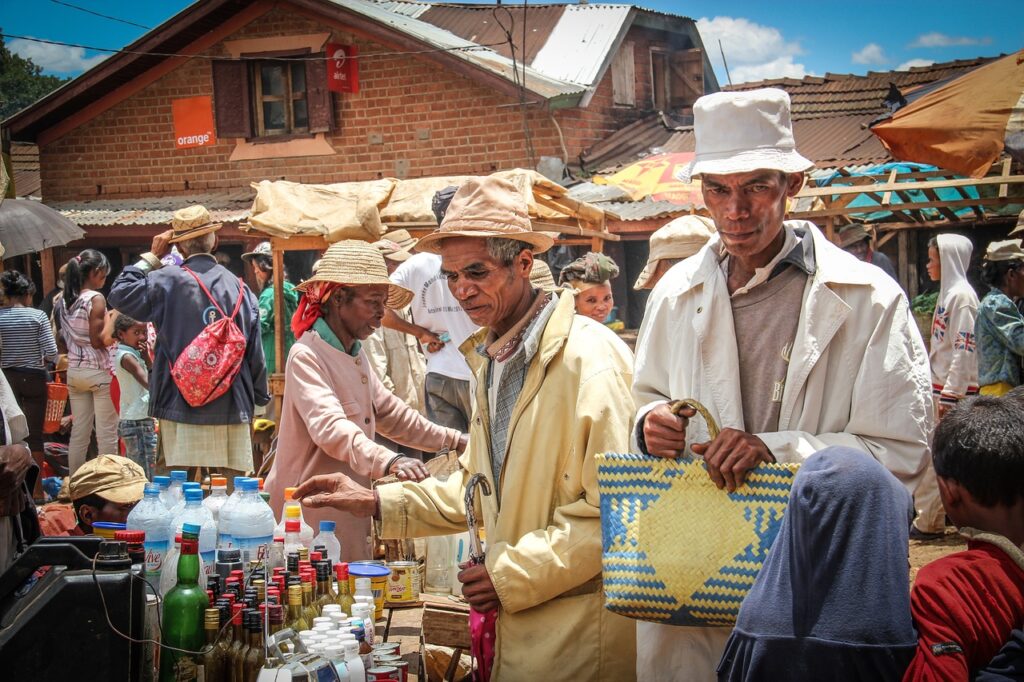
Forex traders seeking new opportunities in the world of currencies often look for unique markets to explore. Madagascar, a beautiful island nation off the southeastern coast of Africa, offers an intriguing currency market in the form of the Malagasy Ariary. Despite being one of the poorest countries globally, with over 70% of its population living below the poverty line, Madagascar’s currency presents valuable insights and potential opportunities for forex traders. The Malagasy Ariary has suffered devaluation due to political instability, weak infrastructure, and a fragile economy heavily reliant on agriculture.
An Island Nation with Rich Biodiversity
Madagascar is renowned for its incredible biodiversity, with over 90% of its flora and fauna being endemic to the island. This natural wealth, however, has not translated into economic prosperity. Madagascar’s economy has struggled due to various factors, including political instability, weak infrastructure, and a heavy reliance on agriculture.
Political Instability and the Malagasy Ariary
Political instability has been a significant factor contributing to Madagascar’s economic woes and the devaluation of the Malagasy Ariary. The country has faced numerous political crises over the years, with periods of unrest and uncertainty. Forex traders interested in the Malagasy Ariary must stay informed about political developments in Madagascar, as shifts in the political landscape can have a direct impact on the currency’s value.
Weak Infrastructure: A Roadblock to Prosperity
Madagascar’s weak infrastructure has also played a role in the devaluation of the Malagasy Ariary. The lack of efficient transportation networks, reliable energy sources, and adequate access to clean water and sanitation has hindered the country’s development, making it difficult to diversify the economy and attract foreign investment.
Forex traders exploring the Malagasy Ariary market must keep an eye on infrastructure projects and developments in Madagascar, as these can influence the currency’s performance. Improvements in infrastructure can boost investor confidence, strengthen the economy, and potentially lead to an appreciation of the Malagasy Ariary.
An Economy Tied to Agriculture
Madagascar’s economy is heavily reliant on agriculture, with more than 80% of the population engaged in farming activities. This dependence on agriculture exposes the country’s economy to the volatility of global commodity markets and the impact of climate change.
Forex traders interested in the Malagasy Ariary must be aware of global agricultural trends and their potential impact on Madagascar’s economy. Fluctuations in the prices of key agricultural exports, such as vanilla and rice, can have a direct effect on the value of the Malagasy Ariary.
Opportunities in the Malagasy Ariary Market
Despite its challenges, Madagascar’s currency market offers opportunities for traders willing to engage with this unique and complex environment. As the country works to overcome its obstacles and harness its untapped potential, traders who understand the intricacies of the Malagasy Ariary market may find promising opportunities for growth and investment.
In conclusion, Madagascar’s Malagasy Ariary offers a captivating and challenging market for forex traders looking to explore a lesser-known currency. By understanding the impact of political instability, weak infrastructure, and agricultural reliance on the currency’s devaluation, traders can navigate the complex landscape of the Malagasy Ariary market. As Madagascar seeks to address its challenges and unlock its potential, forex traders willing to delve into this unique market may discover a wealth of opportunities.
10. São Tomé and Príncipe Dobra (STN) – 25.58 STN/USD
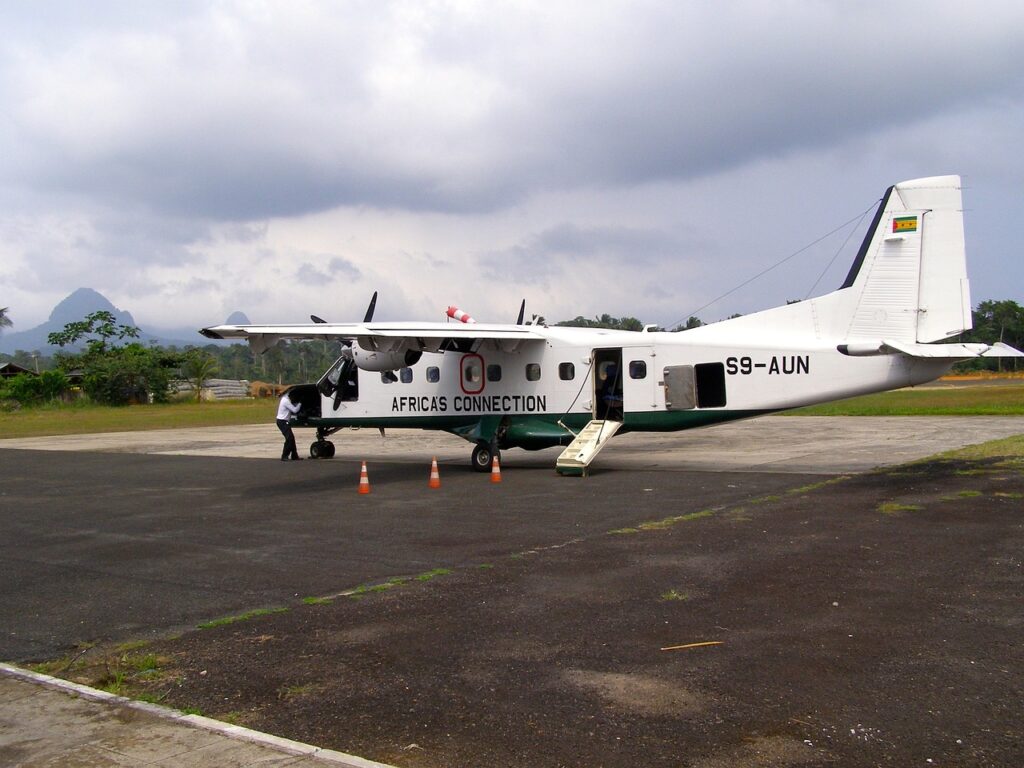
When it comes to forex trading, exploring lesser-known currencies can often lead to unique and profitable opportunities. São Tomé and Príncipe, an island nation situated in the Gulf of Guinea off the western coast of Africa, offers a fascinating currency market in the form of the São Tomé and Príncipe Dobra. This archipelago nation has experienced currency devaluation due to its small, fragile economy and limited resources. As the country heavily relies on foreign aid, its high inflation rate has further weakened its currency.
An Enchanting Archipelago with a Rich History
São Tomé and Príncipe is a captivating island nation with a diverse cultural history, having been a Portuguese colony until gaining independence in 1975. The islands are home to lush rainforests, stunning beaches, and a unique blend of African and Portuguese influences, making it an attractive destination for tourists. Despite its natural beauty and rich history, the nation’s economy remains underdeveloped, hindering the growth and stability of the São Tomé and Príncipe Dobra.
A Fragile Economy and Limited Resources
São Tomé and Príncipe’s economy is predominantly reliant on agriculture, with cocoa production being the primary source of income. The country’s small size and limited resources make it challenging to diversify the economy, leaving it vulnerable to fluctuations in global commodity prices. Forex traders interested in the São Tomé and Príncipe Dobra should monitor developments in the agricultural sector and global commodity markets, as these factors can significantly impact the currency’s value.
Dependency on Foreign Aid and High Inflation
Another critical aspect of São Tomé and Príncipe’s economy is its heavy reliance on foreign aid. This dependence has created an environment prone to high inflation, which has further weakened the São Tomé and Príncipe Dobra. Forex traders must be aware of the nation’s fiscal policies and international aid agreements, as changes in these areas can influence the currency’s performance.
Opportunities in the São Tomé and Príncipe Dobra Market
Despite its challenges, São Tomé and Príncipe’s currency market presents intriguing opportunities for forex traders willing to explore this untapped market. The nation has the potential to diversify its economy by investing in tourism, renewable energy, and sustainable agriculture, which could lead to increased stability and growth.
Forex traders who keep a close eye on the country’s development initiatives and economic policies may find promising opportunities in the São Tomé and Príncipe Dobra market. By understanding the complexities of this market and staying informed about the nation’s progress, traders can position themselves for potential growth and investment in this island paradise.
In conclusion, São Tomé and Príncipe offers a captivating and unique currency market for forex traders willing to delve into the world of the São Tomé and Príncipe Dobra. By understanding the factors contributing to the currency’s devaluation, such as the fragile economy, limited resources, dependency on foreign aid, and high inflation, traders can better navigate the complexities of this market. As São Tomé and Príncipe continues to work on addressing its challenges and unlocking its potential, forex traders who embrace this island nation’s currency market may discover a wealth of untapped opportunities.
Conclusion: The Weakest Currencies in 2023 and Their Impact on the Global Economy
The weakest currencies in the world in 2023 provide a fascinating window into the economic and political challenges faced by countries striving to uphold their currency values. Factors that contribute to currency devaluation include political instability, economic downturns, inflation, and limited resources. It is essential for governments and central banks to implement robust monetary policies and maintain political stability to promote economic growth and safeguard their currencies from devaluation.
By examining these ten weakest currencies, we can gain a deeper understanding of the global economy and the intricacies of international finance. As countries work to tackle their challenges and enhance their currencies’ value, individuals and businesses can better navigate the foreign exchange markets and international trade by staying informed about global economic trends.
The Importance of Analyzing Weaker Currencies
Focusing on weaker currencies allows traders, investors, and policymakers to identify potential opportunities and risks within specific regions. These currencies can serve as indicators of regional economic conditions and provide valuable insights into the factors affecting currency values. By understanding the dynamics behind these weaker currencies, market participants can make informed decisions in their foreign exchange dealings and international investments.
Lessons from Weaker Currencies for Economic Development
Weaker currencies can also serve as case studies for economic development and policymaking. Countries struggling with currency devaluation can learn from the experiences of others, implementing successful strategies and avoiding pitfalls. For instance, countries with high inflation rates can adopt measures that have proven effective in controlling inflation in other nations. Furthermore, studying the impact of political instability on currency values can encourage governments to prioritize good governance and transparency in their efforts to support economic growth and development.
Opportunities for Forex Traders and Investors
For forex traders and investors, the weakest currencies in the world offer unique opportunities to diversify their portfolios and capitalize on potential growth. By understanding the economic and political factors driving these currencies’ values, traders can identify trends and make informed decisions in a rapidly changing global market. Additionally, investors can seek out untapped markets with potential for long-term growth, such as countries working to improve their economic conditions and stabilize their currencies.
The Role of International Cooperation
As countries work to address their challenges and improve their currencies’ value, international cooperation plays a crucial role in fostering global economic stability. International organizations, such as the International Monetary Fund (IMF) and the World Bank, provide financial assistance and policy guidance to countries in need. These efforts can help stabilize currencies, promote economic growth, and ultimately contribute to a more stable global economy.
In conclusion, the weakest currencies in the world in 2023 provide valuable insights into the economic and political challenges faced by countries attempting to maintain currency value. Through a careful examination of these currencies, we can deepen our understanding of the global economy and the intricacies of international finance. As countries address their challenges and work to improve their currencies’ value, staying informed about global economic trends will enable individuals and businesses to better navigate the foreign exchange markets and international trade.
Did you like our article? Then please follow us on Twitter for more related content and share it with your friends 🙂 Can we do something better or do you have suggestions, corrections or additions to the article? Please don’t hesitate to comment below:


